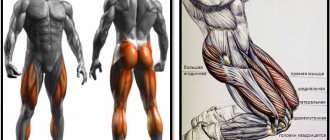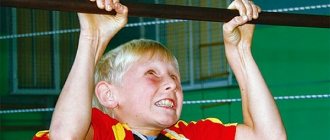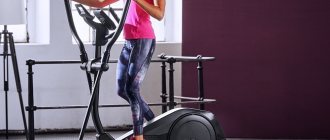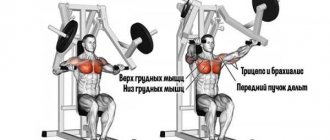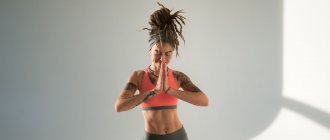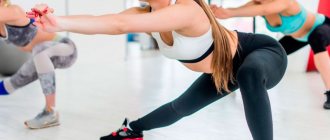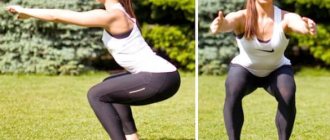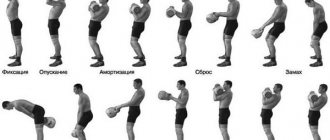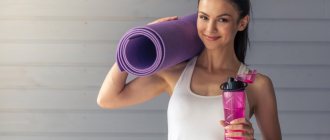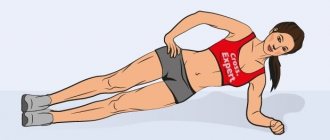Leg curls in the simulator are one of the most popular exercises included in the training complex for those who want to build a harmonious body.
However, there are many rumors about him. Some people believe that this method can destroy the knee joints. Someone, on the contrary, writes that it is precisely this exercise that helps correct even the most imperfect shape of the legs. Where is the truth?
Working muscles
Beginners in sports are often interested in: what leg muscles work during extension? This exercise is aimed at pumping the quadriceps quadriceps. It is performed in a sitting position, which means that skeletal stabilizers are not involved in the process. The load on the front of the thighs, when compared with other areas of fitness, increases. The process involves:
- The rectus muscle is the most prominent of all the quadriceps muscles. It is located in the center of the thigh.
- Intermediate wide . It is located below the straight line and, with good development, pushes it upward.
- Medial . The shape resembles a drop of water.
- Lateral . External muscle.
The medial and lateral zones are responsible for giving the round shape. If you stretch them further while sitting in the exercise machine, the lines of the body will look beautiful and will emphasize the appearance of the physique. To do this, you need to tilt the body as much as possible. This trick will be useful to everyone, but more so to people who have long legs. Some models of exercise equipment allow you to perform the exercise while lying down. Then the load on these surfaces increases.
Some muscle groups receive indirect tension because they provide a stable body position. These are the muscles of the arms, back and abs. They deal with static loads.
Abdominal training machine
It is advisable to build an abdominal workout based on the breathing rate
. When bending, exhale, and when bending, inhale. This mode is especially convenient for those who are just starting their training.
To avoid lower back pain the next day, bend only as far as is comfortable
for the back muscles: when working on this simulator they are stretched under tension.
At the same time, be sure to ensure that the support with your feet is correct: on the entire foot, with your legs parallel to each other.
Execution technique
It seems that it is impossible to come up with a simpler activity than leg extensions in a machine. This is partly true, but there are some subtleties.
First, adjust the machine correctly. You can change three indicators: the location of the pillow, the placement of the bolster that you will use to wrap your feet, and the load.
Install the backrest so that you can sit comfortably. In other words, the knees rest comfortably on the edge of the seat, the sacrum is pressed against the backrest.
Adjust the position of the soft roller so that it rests on the lower parts of the ankle. Limbs should be bent at right angles. If the angle is sharp, then fatigue will set in quickly.
Preparation ends with choosing the optimal weight - it all depends on individual physical capabilities. You need to choose so many kilograms that you can do at least 3 sets of 15 times. Don't burden yourself too much.
After preparing the work area, you can master the technique of performing leg extensions:
- Sit on the machine, press against the back, and place your feet behind the bolster. With our palms we grasp the handles located on the sides of the seat. Raise your socks as high as possible.
- As you exhale, straighten your knees. Then squeeze your quadriceps on top as hard as possible and stay in this position for 2 seconds.
- As you inhale, lower your legs smoothly; there is no need to bend them all the way. This way, even the bottom of the quadriceps will be tense. Control the sensations in your knees; we do not recommend throwing your lower limbs suddenly.
- Repeat the exercise the specified number of times.
There are many variations on how to perform the leg extension exercise while sitting. Professional athletes take turns training one leg, then the other. This option allows you to better feel the functioning of muscle groups. It will be useful for asymmetry. The range of motion can be full or partial. If you feel tired, finish the approach with a partial range of motion.
Recommendations for implementation
If you have some difficulties with your knee joints, then do this exercise before starting basic training. This way you can warm up the ligaments. By changing the location of the socks, you can distribute the tension over the entire area of the quadriceps. If you point your toes outward, the inner plane of the quadriceps develops more. When they are directed inward, the emphasis moves to the outer areas. Try different techniques.
To reduce pressure on the knee joints, make sure that your shins are not at the same height as your hips at the bottom of the trajectory. We press our back as tightly as possible to the bench and do not round it. The ankle can be relaxed.
Experts also advise:
- Practice slowly, don't rely on inertia.
- Do not make rapid movements when extending your legs in the machine, this can lead to knee damage.
- Warm up your muscles and joints before exercising.
- Exhale as you move up, and inhale as you move down.
- If you are used to working with medium or significant weight, you need to use the side handles of the equipment to fix it on the seat.
- Do not pull the handles towards you to increase the swing.
- The knees should not hang outside the seat.
- At the top point of the calf amplitude, you need to straighten it.
- When lowering, you should not stay at the minimum point for a long time, this provokes overload of the quadriceps muscle.
- When lifting weights, tense your feet and point your toes toward you.
- The body must be in a static position. You can't squirm in place.
- If you feel pain or discomfort in your muscles while bending, stop immediately.
It is advisable for beginners to perform leg extensions in a sitting machine after the main workout, while professionals, on the contrary, can use them as a warm-up.
Exercise machine for the back and shoulder girdle: Lat machine
This is perhaps one of the most famous exercise machines, the most comfortable to use. It maximally works the muscles of the back and anterior part of the body.
. But, if a person has pain in the cervical or shoulder regions, it is better to approach the armor machine only after all the muscles are thoroughly warmed up. In any case, it requires trained back and shoulder muscles.
Work on mistakes
The eight biggest mistakes people make at the gym and how to avoid them.
The exercise machine is adjusted so that from a sitting position you can easily reach the bar, and the angle of the knee, hip and ankle joints is exactly 90 degrees. In this case, the back should remain completely straight - the body should not be tilted
neither forward nor backward.
The weight that you will have to pull is selected either by feeling or based on the maximum “lifting” weight.
The crossbar is lowered using the hands to a position in front of the chest or behind the back. When placing the bar behind your back, the latissimus dorsi muscles and the muscles that fix the shoulder blades
. In this case, the hand should cover the bar from behind, the so-called forward grip.
As you lower the bar of the lat machine in front of your chest, turn your palm with your fingers towards you and grab it with a “reverse grip”. This way you will load the flexor muscles of the arms, the muscles of the chest and abdomen
.
Popular mistakes
Beginning athletes rely on intuition when performing an exercise. As a result, inaccuracies are allowed:
Too big a load. If a person cannot cope with the weight, then the likelihood of injury is high. This means not only giving up training, but also the risk of remaining crippled for the rest of your life. To avoid damage, use rubber shock absorbers.
- Sudden movements are a common mistake and cause injuries of varying severity.
- Irrational prioritization. Regular flexion does not lead to a noticeable increase in muscle mass.
- Insufficient warming of the ligaments.
- Non-static body position.
Inexperienced beginners select inappropriate rep ranges. Conducting such training in a strength style (6 to 8 times) is a pointless idea. You won’t be able to pump up your quadriceps, and your knees will hurt. The ideal regime is from 12 to 15 times. If you want to “cut through” the quadriceps, then slow down the lowering and increase the number of repetitions to 20.
Advantages and disadvantages
The benefits of hip extension in the simulator:
- Increases detail and relief of the front thigh.
- The load does not lead to compression of the spine.
- Completes the formation of the quadriceps muscle groups.
- The technique is suitable for warming up the knee joint. It is placed at the first stage of the warm-up.
- Even a beginner athlete can cope with the tension.
Despite the load, the machines strengthen the connections. This type of activity is included in the rehabilitation program for people after serious injuries.
There are also known negative aspects of training, do not forget about them:
- During classes, the quadriceps muscle is worked out. If the goal is to form the gluteal muscles, then it is better to look for other areas of activity.
- Knee joints face traumatic situations. The cruciate ligaments in the front are at risk. To avoid dangerous injuries, choose a moderate weight. Incorrect technique leads to ligament rupture. It can be treated, but recovery will take a long time.
It is important to ensure the harmonious development of the body. Despite the listed disadvantages of the extension simulator, it is included in the list of trainings.
Seated/standing overhead press. Vertical block head pull
For some reason, it is believed that the press and pull of a vertical block from behind the head are perhaps the key in training the deltoid muscles. Thinking here goes, as they say, in a straight line: the rear delts need to be trained with overhead presses or head pulls in the simulator (after all, they are performed from behind), and the front delts with lat pulldowns / chest presses (performed in front of you). But is this right?
Let's do a little experiment. Let's take a pumped-up person and ask him to move his arm to the side, applying a certain force to it - in front, behind and above. At the same time, our muscleman has to overcome these efforts by tensing the corresponding muscle bundles. Next, holding your hand on the front deltoids, we ask him to turn his hand, thereby duplicating the starting position when performing overhead presses. It is clearly visible that the anterior delta is on top , just along the path of the upward movement of the humerus. Next, we will ask the athlete to bring his arm forward (duplicating the starting position of traditional chest presses). The location of the beams remains unchanged - the front beam is still at the top. In this case, the role of each of the deltoid muscle bundles becomes clear:
Anterior bundle – agonist (leading bundle); The middle bundle is a synergist (helper); The posterior bundle is an antagonist (its role is not to interfere with the movement of the anterior bundle, the position is relaxed).
By the way, this fact is very easy to check by applying a force that will be directed upward (simulating overcoming the weight of the barbell from behind the head). In this case, you can feel with your hand the work of all delta bundles. It turns out that only two bundles are involved in the work - the front and middle. The back one, as relaxed as it was, remains relaxed.
Plus, don't forget that our shoulder joints are very mobile.
Thus, overhead presses cannot solve the problem of training the rear deltas . In fact, both the chest press and the overhead press primarily work the “front” deltoids. The only difference is that the chest press is safer because it is more natural. The sitting/standing overhead press and vertical pull-down create a load that is unnatural for the shoulder joints and leads to their injury. In short, there are no advantages, but a lot of disadvantages.
What to replace
There are many alternatives to such physical activity; effective exercises for building quadriceps are:
Front squats with a barbell. During such manipulations, the heel should be on a hill. Weighting discs are suitable for this. Placing your feet at an angle increases impact.
Hack squats. The principle of execution is similar to the squats mentioned above. In this case, a person can independently insure and fix the spine. The exercise involves moderate compression loads.
It all depends on the goals of such a replacement.
Inclusion in the training calendar
Despite the fact that leg extension in a machine is an isolating exercise, the benefits from it are no less than from basic approaches.
- To whom . This exercise can be performed by athletes of any level of training. Both experienced bodybuilders and those who have been visiting the gym for a couple of weeks practice calf curls.
- When . Preferably on the day of full stretching, after completing basic classes. Such stretches activate growth and volume expansion, but it is better to do leg extensions during the “drying” period. Some experts include it in a mass-gaining program.
- For what . Together with the squat and bench press, this exercise puts pressure on the quadriceps and stimulates growth. You will notice the long-awaited centimeters in your hips instantly.
The exercise is often chosen for “drying out”. It allows you to work out the heads of the quadriceps, “outlining” them.
Strengthening the rectus muscles improves achievements in sports competitions if running and jumping are involved. Bending your legs with a light load is a chance to restore strength after all kinds of bruises and fractures. The technique is suitable for everyone, regardless of level of training.
5/5 — (16 votes)
Share link:
Leg extension for girls[edit | edit code]
Leg extensions are classified as isolation exercises because they only move the hip joints. As a result, leg extensions do not engage the muscles surrounding the quadriceps. Leg extensions are often used to warm up the knee joints at the beginning of a leg workout.
Performance
Sit on the seat of a leg extension machine and secure your legs under the frame. Tighten your quadriceps and straighten your legs. Hold this position for at least a second, then bend your legs and repeat.
Advantage
- Unlike most quadriceps exercises, leg extensions do not compress the spine.
Flaw
- Used to isolate each head of the quadriceps femoris muscle. The gluteal muscles are not involved here. So, if your main goal is to develop your butt, this exercise is not the best choice for you.
Here the knees are in a traumatic position because the quadriceps muscles of the thighs contract together with the posterior group of thigh muscles, creating an equal load on the knees on both sides.
Recommendations
- Place your hands on the quadriceps muscles of the thighs to better feel the contraction of these muscles.
- Do not arch your back in the lower back, trying to tighten the quadriceps muscles of the thighs more.
Leg extension option on a chair[edit | edit code]
This exercise can be done while sitting, working one leg at a time. To increase the load, you can use ankle weights.
Leg extension option on a chair
